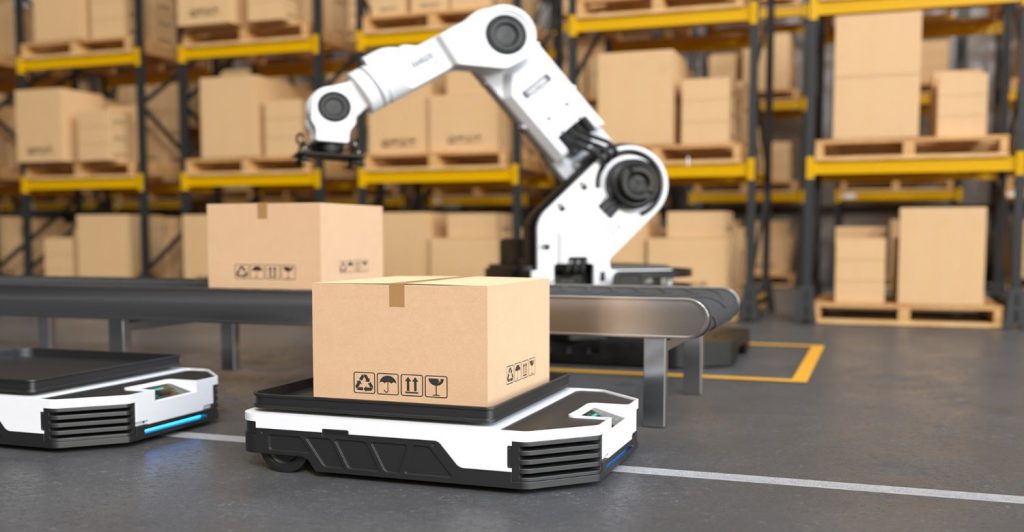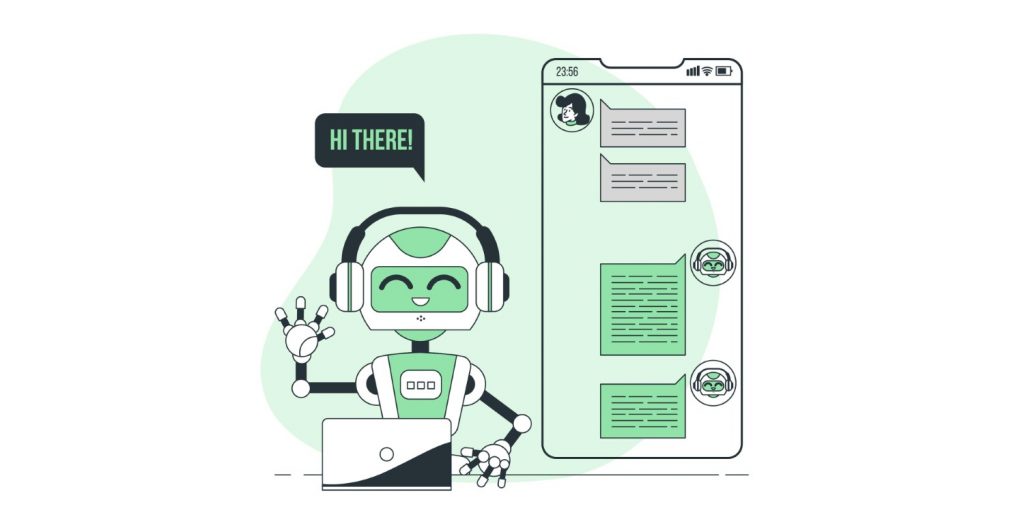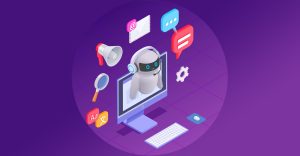The roots of Artificial intelligence (AI) as an area of study lead back to the 1950s. During this time, academics and mathematicians examined whether machines could showcase brilliance. A pivotal event was the 1956 Dartmouth Meeting, where participants embraced the term “artificial intelligence” to portray their new field of research.
Table of Contents
The Early Days of AI Research
In the next few decades, research focused on developing machines with general problem-solving and logical capabilities. Improvements such as neural webs, the Lisp coding language, and Deep Blue beating chess grandmaster Gary Kasparov created great confidence about the possibilities of attaining strong AI.
The Artificial Intelligence Frost
However, by the 1980s, this early improvement slowed. The constraints of AI technology became apparent, resulting in a period now referred to as the “AI frost.”
During this time, financing and interest in AI research significantly declined. While some improvement continued in niche applications like logistics and data mining, the aim of general human-level AI proved more tricky than anticipated. The exaggerated hype around early AI accomplishments led to impractical outlooks about imminent breakthroughs.
This temporary stagnation prompted scientists to shift their focus away from replicating human intelligence. Instead, they sought more practical AI implementations tailored to specific tasks. The reinvention of neural webs into deep learning architectures enabled new progress.
In hindsight, the AI frost served an essential purpose. It was a period of reassessment that assisted in recalibrating expectations and preparing the groundwork for the resurgence of AI we are seeing today.
The Resurgence of AI in Recent Years
Several factors have contributed to the revival of AI in recent years:
- Hardware improvements: The exponential increase in computing power with modern CPUs and GPUs has removed a critical bottleneck. Distributed computing via the cloud provides the infrastructure for AI at scale.
- Data availability: Large labeled datasets have fueled data-hungry deep learning algorithms, enabling them to learn and improve autonomously.
- Algorithmic advances: New models like convolutional and recurrent neural networks have advanced computer vision, NLP, robotics, and more.
- Investments: Increased funding from governments, research labs, and private companies has propelled innovation in AI across sectors.
This confluence of factors has meant AI is now powering everything from search engines and intelligent assistants to self-driving cars and recommendation systems, propelling it firmly into the mainstream.
Types of Artificial Intelligence Systems
Given the broad scope of technologies classified under the umbrella of AI, categories have emerged to characterize AI systems based on their capabilities:
Narrow or Weak AI
Most of the current applications of AI fall under the category of narrow or weak AI. As the name suggests, systems display ‘narrow’ intelligence, meaning they are programmed to perform a specific task supremely well instead of having generalized intelligence. Playing chess, transcribing speech, matching faces, or predicting purchases are examples of narrow AI. While impressive, these systems operate within limited contexts, adhering strictly to their training.
General or Strong AI
It refers to AI systems that can demonstrate human-level intelligence and adaptability across different environments and tasks. In theory, such AI systems would be conscious and self-aware. They can learn independently by identifying patterns, forming abstract concepts, and transferring knowledge across domains. Creating designs that match or exceed the scope of human cognition remains an ongoing pursuit for researchers. While no true general AI exists, it remains an ambitious milestone.
Superintelligent AI
As an extension of general AI, superintelligent AI hypothesizes systems that could radically surpass all human capabilities in intellect, creativity, and social skills. Such AI could possess unprecedented reasoning, decision-making, and strategic planning capabilities, enabling it to solve problems we cannot perceive today. However, there is also fear that superintelligent AI may be highly competent at achieving goals but fail to align with human values and ethics, making it a potential existential threat if uncontrolled. Of course, we are still far from developing superintelligent AI, but speculation continues regarding its implications.
How Artificial Intelligence Works
Having explored the different categories of AI systems, how do they work under the hood? Here we look at some of the essential techniques and concepts in AI:
Machine Learning (ML) and its Role in AI
ML is a subset of AI that enables algorithms and systems to learn from data and effectively improve tasks without explicit programming. The algorithm ‘learns’ by identifying patterns in sample training data. Based on insights from this training, the system can then apply its learning to make predictions or decisions for new real-world data provided to it. Rather than manually coding software routines, ML focuses on training algorithms to learn via statistical analysis.
Deep Learning and Neural Networks
Deep learning is progress of machine learning methods based on artificial neural networks inspired by the human brain’s biological neural networks. In these neural networks, nodes represent neurons that are layered and interconnected with each other, just like neurons in the brain. Data flows through the web with nodes applying mathematical operations to extract functional patterns and relationships iteratively. The neural network is trained over massive datasets to tune itself towards the desired outputs. Deep learning has enabled unprecedented accuracy in computer vision, speech recognition, and natural language processing.
Natural Language Processing
NLP refers to AI systems that comprehend, interpret, and generate human languages. Critical NLP applications include machine translation between languages, text summarization, sentiment analysis, speech recognition, and text-to-speech. Advanced NLP techniques have enabled AI to understand nearly human-level language. Chatbots and virtual assistants extensively use NLP to engage in natural dialogue.
Artificial Intelligence Applications in Daily Life
Beyond the walls of research labs, AI has now firmly integrated into daily lives, often working unnoticed in the background. Here are some common examples of applied AI:
- Virtual Assistants: Intelligent voice-based assistants like Siri, Alexa, and Google Assistant have become ubiquitous and rely heavily on AI for speech recognition and natural language processing to understand commands and respond.
- AI in Healthcare: In healthcare, AI is aiding faster diagnoses through automated analysis of medical scans and radiology images. It is also accelerating pharmaceutical research via computational drug discovery. Chatbots serve as virtual medical assistants offering a preliminary assessment of symptoms.
- Autonomous Vehicles: Prototype autonomous vehicles developed by companies demonstrate how AI can enable self-driving capabilities by combining computer vision, sensor fusion, mapping data, and neural networks to navigate real-world conditions without human intervention.
- AI in Finance: In finance, Wall Street firms use AI algorithms for high-speed automated trading. AI also helps in fraud analytics, loan/insurance underwriting, and personalization of investment portfolios.

Artificial Intelligence in Industry
Beyond consumer applications, AI is poised to transform industries through intelligent automation and insight generation from data:
- Manufacturing: Smart robots with sensing, vision, and learning capabilities enable automation in manufacturing, warehouses, construction, etc. AI optimizes production forecasting, predictive maintenance of equipment, and supply chain logistics.
- Retail: Retail platforms use AI-based recommender systems to personalize product suggestions and search results for consumers based on purchase history. Chatbots are deployed for customer service queries by extracting context from conversations.
- Agriculture: Computer vision systems can automate crop health monitoring, weed/pest detection, and selective spraying. AI optimizes irrigation, fertilizers, and seeding patterns to maximize farm productivity.
- Energy: Utility companies apply AI to forecast electricity demand patterns and increase grid reliability and predictive maintenance for energy infrastructure via anomaly detection from sensor data.
Ethical Considerations in AI
The unprecedented capabilities unlocked by AI also present complex ethical dilemmas regarding liability, privacy, bias, and more:
- Bias: Training data that contains ingrained societal biases around factors like gender, race, age, etc., risks propagating discrimination through AI systems. Algorithms must be continually reviewed for model fairness and transparency.
- Privacy: The ability to collect and analyze massive datasets raises concerns about surveillance and misuse of personal data. Ethical frameworks around consent, data anonymization, accountability, and governance are required.
- Job Displacement: AI adoption is poised to disrupt employment across sectors through automation. Responsible policies are needed to manage workforce transitions arising from technological unemployment.
Beyond these immediate concerns, speculation continues about more futuristic issues like existential risks, manipulation of public opinion, and aligning superintelligent AI with human values if it emerges. These risks underscore why ethics must be incorporated into AI.

Future Trends in Artificial Intelligence
The progress in AI over the past decade pales compared to how it is poised to evolve in the years ahead. Here are some exciting frontiers being explored:
- AI and the Internet of Things: With billions of sensors and devices connected, the exponential data generated will fuel futuristic AI applications.
- Quantum Computing for AI: Quantum computers promise dramatic increases in processing power that could revolutionize AI system training and performance.
- AI in Space: From navigating Mars rovers to analyzing telescope data, AI will be an indispensable tool for space exploration. In the long term, it may enable the colonizing and terraforming of other planets.
Of course, these represent only a subset of the possibilities on the horizon. While human-level artificial general intelligence remains elusive, the pace of innovations suggests we are sprinting towards transformative technological change ahead.
Challenges and Limitations of AI
While the future seems promising, acknowledging the challenges confronting current AI progress remains essential:
- Data Quality: Real-world data is often plagued with problems like incompleteness, noise, bias, and errors that require substantial effort in data cleaning and preprocessing before training AI models.
- AI Security: Like any computing system, flaws in data or code expose AI systems to risks of adversarial attacks, data poisoning, model theft, and cybersecurity vulnerabilities.
- Regulatory Uncertainty: The fast evolution of AI has outpaced legal preparedness, leading to ambiguity around questions of accountability, privacy, and ethics. International alignment on AI governance remains complex.
- Narrow AI Limits: Even the most advanced AI today operates within the narrow constraints of its training data and algorithms. Building adaptable general intelligence remains highly complex.
For AI to deliver its promise, continued progress on foundational research and collaborative policymaking will be essential.
The Road Ahead
AI stands poised to revolutionize how we work, socialize, and conduct business. As it transcends hype into wider adoption, every industry and organization must be transformed by AI in some capacity. Of course, it raises profound social and ethical questions that necessitate thoughtful policymaking to develop AI responsibly.
FAQs about AI
Q1. What is artificial intelligence (AI)?
A1. AI refers to computer systems programmed to perform tasks and make decisions that would otherwise require human intelligence and cognition, including visual perception, speech recognition, and language translation skills.
Q2. What’s the difference between narrow AI and general AI?
A2. Narrow AI systems perform specific tasks they are trained for, while general AI would possess broad human-like intelligence and adaptability across different environments and problems.
Q3. Will AI overtake human intelligence?
A3. While some believe superintelligent AI could one day surpass human capabilities, we still need to develop accurate artificial general intelligence comparable to the breadth and flexibility of the human mind.
Q4. What are some examples of AI we use every day?
A4. From virtual assistants like Siri to recommendation systems on Netflix and Spotify, AI has become pervasive in consumer apps and services we regularly use. It often works imperceptibly in the background to enhance the experience.
Q5. What are the risks and challenges associated with AI?
A5. Some key risks include bias in data and algorithms, job displacement, privacy erosion, manipulation through disinformation, lethal autonomous weapons, and more. Responsible governance and ethics are crucial. Technical limitations also remain around developing adaptable general intelligence in machines.
* From the Greek word words “taxi” and “nomos,” which mean “division” and “law,” a taxonomy classifies formally defined items in a hierarchical structure
** BERT, which stands for Bidirectional Encoder Representations from Transformers, is based on Transformers, a deep-learning model




